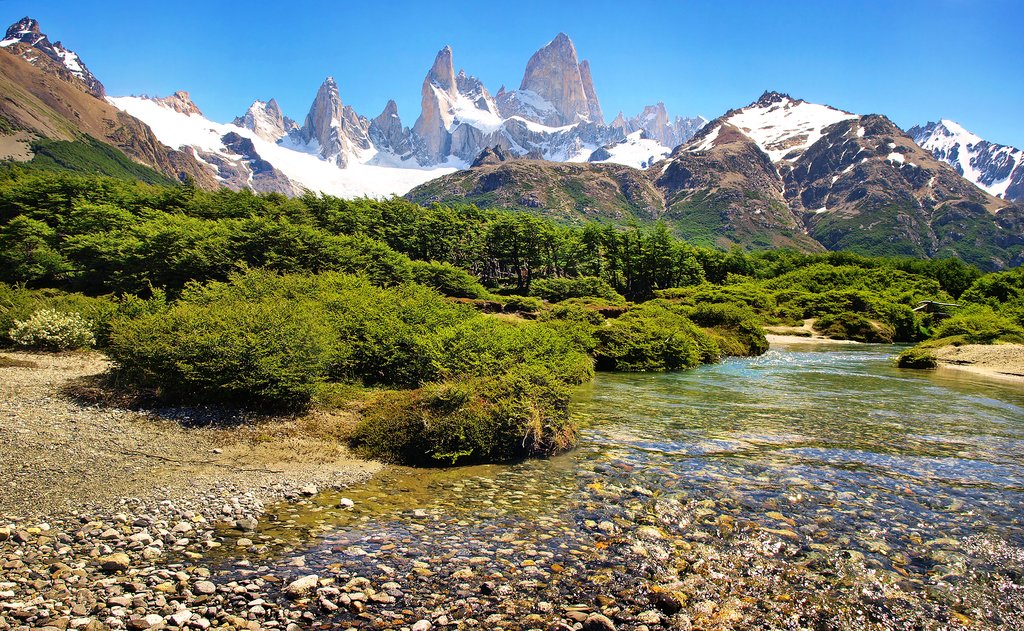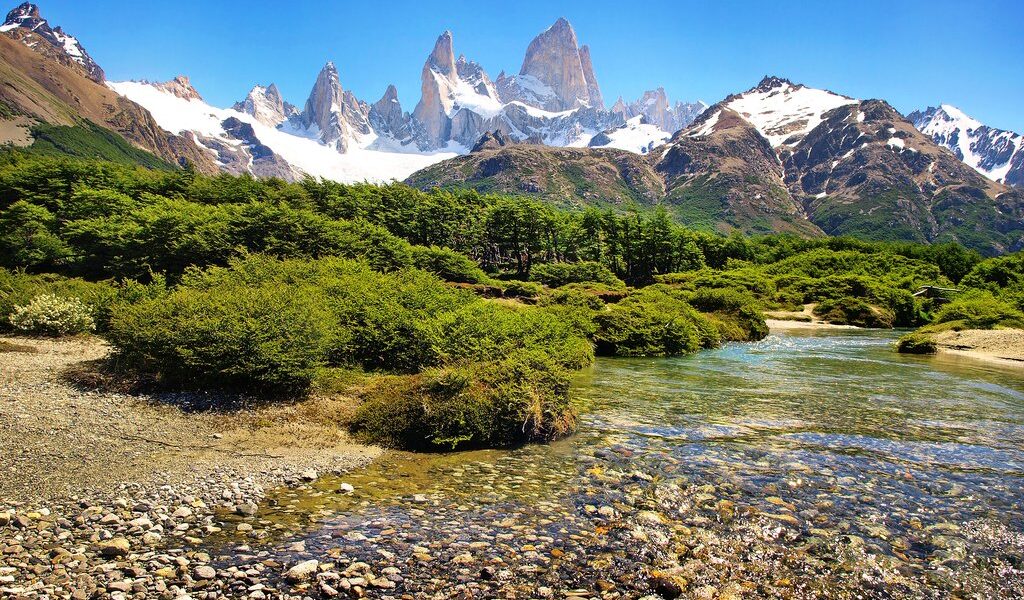
January in Argentina equates to long days and blissful summer weather—a time when locals skip out of town and head for the beach resorts. It’s also high season for tourists in southern Patagonia for glaciers, wildlife, and national parks, so expect peak prices. This monthly guide will tell you what to do and where to go (and how to beat the crowds).
Weather
Argentina experiences its warmest climate of the entire year in January, attracting tourists from across the globe. However, due to the country’s immense geographical size, climatic conditions vary significantly across regions. Other than a tropical strip in the far north that includes Iguazu Falls, Argentina lies in the temperate zone. Expect cool, arid weather in the southern reaches like Patagonia, while the central parts of the country are typically hotter and more humid during this time.
Buenos Aires, for example, enjoys daytime temperatures that often reach the mid-80s Fahrenheit, cooling to the 60s during nighttime. In stark contrast, Ushuaia in the southernmost area usually sees daytime highs around the mid-50s, with nighttime lows in the 40s. These conditions are ideal for visiting prime Patagonian destinations such as Tierra del Fuego and Los Glaciares National Park.
Be aware that summer is also the season when the famously unpredictable Patagonian winds are most active, often arriving suddenly. Regardless of your destination in Argentina this month, it’s advisable to pack layered clothing and lightweight outerwear that can handle both rain and gusty conditions.
Crowds & Costs
With summer delivering the most inviting weather for all sorts of outdoor activities, it’s no surprise that January marks the height of the tourist season in Argentina. Expect increased crowds and higher travel expenses, particularly when it comes to accommodations. Hotels tend to fill quickly, so securing bookings well ahead of your trip is highly recommended.
This time of year sees a surge in visitors, especially in high-demand areas like Southern Patagonia. Meanwhile, Argentine locals head off to enjoy time at lakes or beaches. Interestingly, as many residents vacate Buenos Aires for summer getaways, hotel rates in the capital often become more affordable. This can be a perfect opportunity to explore the city in relative peace. Just note that many restaurants and museums may operate on limited hours, especially during early January, so it’s wise to call ahead and confirm they’re open when you plan to visit.
Where to Go
Travelers visiting Argentina in January can benefit from longer daylight hours—especially in southern Patagonia, where daylight can last up to 15 hours. This extended daylight is perfect for making the most of scenic outdoor excursions. A highlight of the region is the charming mountain village of El Chaltén, which comes alive during the summer season. It serves as a hub for hikers, with trailheads beginning just outside the village, offering sweeping views of iconic peaks such as Fitz Roy, Poincenot, and Torre.
Near the town of El Calafate, day trips to Perito Moreno Glacier in Los Glaciares National Park are a major draw. A system of wooden walkways allows you to view the glacier from various perspectives, and you can even get a close look at its towering ice wall from a short boat cruise. If you’re lucky, you might witness a dramatic “calving” event—the thunderous collapse of ice chunks into the waters below, accompanied by an unforgettable echoing roar.
Further north, the Argentine Lake District provides excellent opportunities for outdoor activities such as hiking and kayaking. Picturesque towns like Bariloche add to the appeal. For those in search of warmer waters, heading to the Atlantic coast is ideal. Mar del Plata boasts beautiful beaches like Playa Grande and Punta Mogotes, which are popular among summer beachgoers.
What to Do
January in Argentina is a haven for outdoor adventure lovers, particularly those exploring Patagonia. Popular activities include hiking across the rugged Andes, kayaking and cycling in the Lake District, horseback riding in traditional gaucho territory, and taking boat tours around the fjords and channels of Ushuaia.
While Argentina’s Atlantic shoreline may not match the tropical vibe of Brazil, it still offers charming and relaxed beaches with sandy shores, shaded parks, and elevated boardwalks ideal for running, walking, or biking. It’s also a fantastic opportunity to observe how Argentines enjoy their summer holidays—complete with lively nightlife and roadside food stalls serving up local seafood favorites like fried fish.
In Buenos Aires—often called the “Paris of South America”—January is also an excellent time for cultural exploration. Visit top-tier museums, explore hip neighborhoods, and attend a performance at Teatro Colón, one of South America’s most prestigious opera houses. Add to that an eclectic mix of gourmet restaurants and stylish cocktail bars, and you’ve got an unforgettable urban experience.
Events in January
Festival Nacional del Folklore. This is Argentina’s largest and most celebrated folk music festival, held annually during the final week of January in the town of Cosquín, located close to Córdoba.
Carnival in Gualeguaychú. Every January and February, the town of Gualeguaychú becomes a hot spot for Argentina’s most anticipated carnival, famous for its vibrant dancers, elaborate costumes, and spectacular parade floats. Rivaling Brazil’s carnival, this celebration occurs over nine consecutive Saturdays, giving travelers numerous chances to join in the festivities.
Dakar Rally. Originally known as the Paris-Dakar Rally, this grueling endurance race has found a home in South America for over a decade. Featuring both amateur and professional racers, this iconic race includes a segment through Argentina—so keep a lookout for the thrilling action along the route.
Itineraries for January Travel
Classic Argentine Patagonia. Spanning 13 days, this itinerary begins in Buenos Aires before heading south to Patagonia for an adventurous mix of activities and wildlife experiences. You’ll explore two incredible national parks: Tierra del Fuego, known for its rivers and ancient settlements, and Los Glaciares, home to stunning glaciers and striking mountain landscapes. Wildlife encounters include whale watching and a visit to the continent’s largest colony of Magellanic penguins.
Trekking in Bariloche. This seven-day itinerary starts in Buenos Aires and moves to Bariloche in Argentina’s Lake District. Set beside Nahuel Huapi Lake, this alpine destination offers trekking routes, cultural tours, kayaking, and a taste of local culinary delights, including its renowned chocolate shops and cozy eateries.
Additional Info
For more seasonal travel tips, you can also explore guides on Argentina during December and February, or read about the best times to visit the country and frequently asked questions from travelers.
B-60

